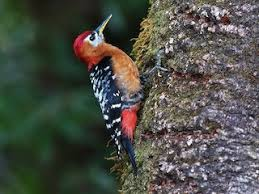Forest Fires Threaten Rare Himalayan Fauna
Why in News?
According to the forest department, Forest fires that occur annually in Uttarakhand cause significant damage to the region's precious forest resources like trees, plants, bushes, herbs and thick layers of soil.
- It also threatens rare Himalayan fauna - wild animals, reptiles, mammals, birds, butterflies, common flies, honey bees and soil-enriching bacterias.
Key Points
- Avian species like the cheer pheasant, kalij pheasant, rufous-bellied woodpecker, common rose, chocolate pansy and common crow have their breeding season from March to June, which is also the period when most fires occur in the region's forest area.
- According to a Non-governmental Organisation (NGO) working towards preserving the Himalayan butterflies, there are a total 350 species of butterflies found in the Himalayan region, 120 are on the verge of getting endangered as they breed in host plants that are destroyed in forest fires.
- The Dehradun-based Forest Research Institute is also researching the impact of forest fires on the yellow-headed tortoise that is found throughout the South Asian region.
- It is listed in schedule 4th of the Wildlife Protection Act, 1972 and also appears in appendix of the Convention on International Trade in Endangered Species of Wild Fauna and Flora (CITES) due to its being endangered.
- According to the forest department, Forest fires in Uttarakhand have affected more than 1,437 hectares of forests since November 2023.
Cheer Pheasant
- The cheer pheasant (Catreus wallichii), also known as Wallich's pheasant is a vulnerable species of the pheasant family, Phasianidae.
- It is the only member in the genus Catreus.
- IUCN Red List Status: Vulnerable
- CITES Status: Appendix I
- WPA: Schedule I
Rufous-Bellied Woodpecker
- The rufous-bellied woodpecker (Dendrocopos hyperythrus) is a species of bird in the family Picidae.
- It is found along the Himalayas in the Indian subcontinent and Southeast Asia.
- Its natural habitats are subtropical or tropical moist lowland forests and subtropical or tropical moist montane forests.
- IUCN Red List Status: Least Concern
- CITES Status: Not Evaluated
- WPA: Schedule IV

